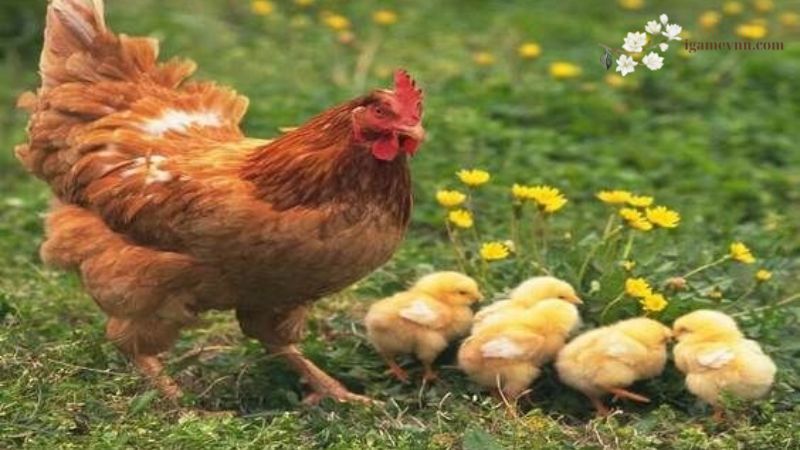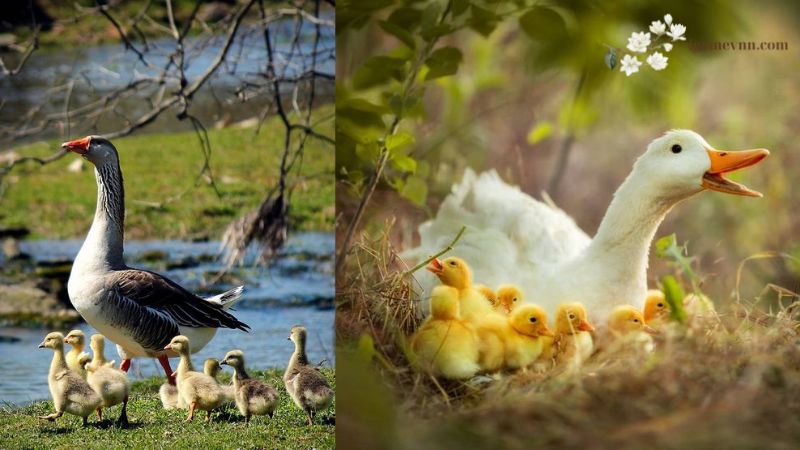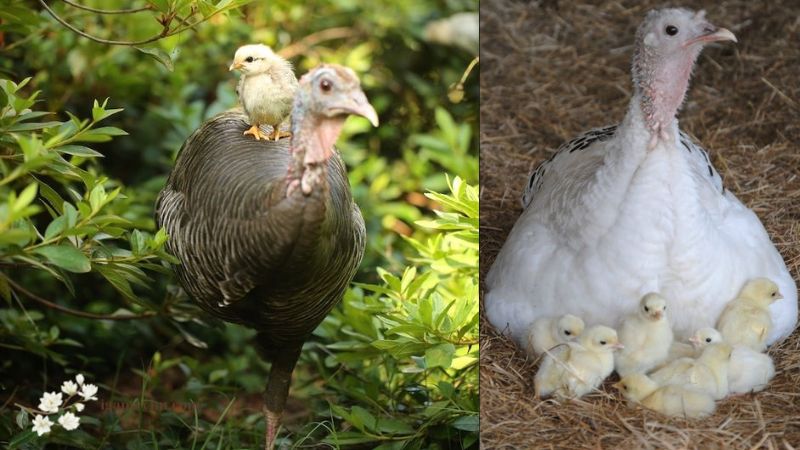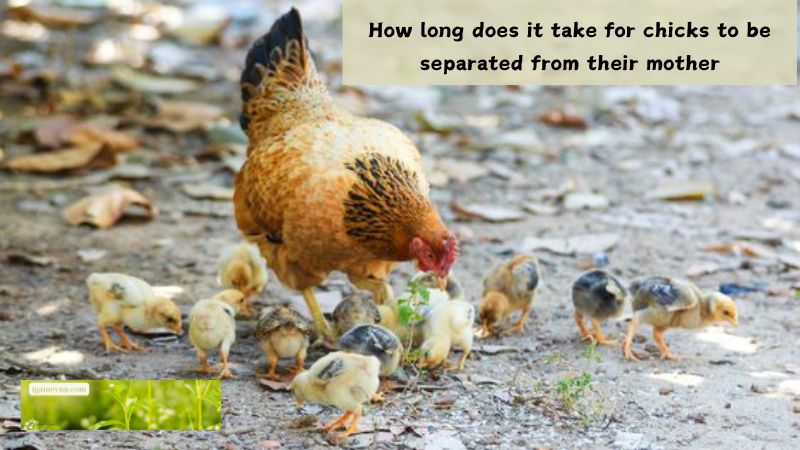When considering “How long does it take for chicks to be separated from their mother?” it’s essential to understand that the answer varies widely depending on the species, the environment, and the farming or breeding practices involved. Let’s Igamevnn delve into the details of different species and their specific practices.
Table of Contents
ToggleHow Long Does It Take for Chicks to Be Separated from Their Mother?
Chickens
Natural Raising
In natural settings, where a mother hen is allowed to raise her chicks without human interference, the duration of care can extend up to 6-8 weeks. During this time, the mother hen is incredibly protective and nurturing. She keeps her chicks warm, often using her own body heat, especially during the initial weeks when the chicks are not yet fully feathered. The hen also teaches the chicks essential survival skills such as foraging for food, scratching the ground to find insects, and recognizing potential threats.
By the end of this 6-8 week period, the chicks are usually feathered out and capable of maintaining their body temperature without the mother’s help. They start to roam further away from the hen and gradually become more independent. This natural process ensures that the chicks develop at their own pace, benefiting from the constant care and guidance of their mother.

Commercial Practices
In contrast, commercial poultry farming often follows a different approach. In these settings, the question, “How long does it take for chicks to be separated from their mother?” typically has a much shorter answer. Commercially, chicks are usually separated from the mother hen within a day or two after hatching. This early separation is primarily due to the need for efficiency and the different rearing requirements in large-scale operations.
Once separated, the chicks are moved to a brooder, an environment specifically designed to meet their needs. The brooder provides a controlled climate with adequate warmth, which is crucial for the chicks’ survival in the absence of the mother hen’s body heat. The chicks are also provided with easily accessible food and water to ensure their growth and health. This method, while efficient, lacks the natural learning and bonding that occurs when a hen raises her chicks.
Ducks
Natural Raising
Ducklings, like chicks, benefit from staying with their mother for an extended period when raised naturally. Typically, ducklings remain with their mother for about 6-8 weeks. During this time, the mother duck leads her ducklings to water sources, teaches them to swim, and shows them how to forage for food. The ducklings learn to eat small insects, aquatic plants, and other natural food sources under her guidance.
The mother duck also provides warmth and protection, especially during the early stages when the ducklings are most vulnerable. By the end of the 6-8 week period, the ducklings are usually fully feathered, more independent, and capable of regulating their body temperature.

Commercial Practices
In commercial duck farming, the approach to “How long does it take for chicks to be separated from their mother?” is similar to that in poultry farming. Ducklings are often separated from the mother within a day or two after hatching. They are then placed in a brooder that provides the necessary warmth and a consistent supply of food and water.
The controlled environment of the brooder ensures that the ducklings grow quickly and stay healthy, although they miss out on the natural behaviors and bonding that occur when raised by a mother duck. This practice allows for the efficient rearing of large numbers of ducklings, catering to the demands of commercial production.
Turkeys
Natural Raising
For turkeys, the natural rearing process can extend even longer. Turkey poults typically stay with their mother for about 8-12 weeks. During this period, the mother turkey, or hen, provides warmth, protection, and teaches the poults essential survival skills. The poults learn to forage for food, recognize predators, and navigate their environment under the mother’s guidance.
The extended care period helps ensure that the turkey poults develop properly, gaining strength and learning necessary behaviors from their mother. By the end of this period, the poults are usually well-feathered and capable of independent survival.

Commercial Practices
In commercial turkey farming, the question, “How long does it take for chicks to be separated from their mother?” is addressed with a similar approach to chickens and ducks. Turkey poults are generally separated from the mother within a day or two after hatching. They are then moved to a brooder where they receive consistent warmth, food, and water.
This early separation allows for the efficient rearing of poults in large numbers, meeting the demands of the commercial turkey industry. However, it also means that the poults miss out on the natural learning and bonding experiences provided by the mother turkey.
The Impact of Early Separation
The practice of early separation in commercial farming is driven by the need for efficiency and the different requirements of large-scale operations. By separating the chicks, ducklings, or poults early, farmers can provide a controlled environment that maximizes the health and growth of the young birds. The brooders used in these settings are designed to maintain the appropriate temperature, humidity, and provide easy access to food and water, ensuring that the young birds grow quickly and remain healthy.
However, this approach also has its drawbacks. The natural rearing process, where the mother hen, duck, or turkey raises her young, provides more than just physical care. The mother teaches essential survival skills, offers protection, and fosters natural behaviors that are important for the development of the young birds. When asked, “How long does it take for chicks to be separated from their mother?” in a natural setting, the answer reflects a period that allows for the comprehensive development of the chicks, including social and behavioral learning.
Conclusion
How long does it take for chicks to be separated from their mother? reveals significant differences between natural rearing and commercial farming practices. In natural settings, chicks, ducklings, and poults benefit from extended periods of maternal care, typically ranging from 6-12 weeks, depending on the species. This period allows them to develop fully, gaining important survival skills and social behaviors.
In commercial settings, the need for efficiency and controlled environments leads to early separation, often within a day or two after hatching. While this approach ensures rapid growth and health in a controlled setting, it lacks the natural learning and bonding that occurs when the mother raises her young.
Understanding these differences highlights the importance of both methods and the trade-offs involved. Whether for small-scale natural rearing or large-scale commercial production, the practices surrounding “How long does it take for chicks to be separated from their mother?” reflect the diverse approaches to raising poultry and the varying goals of each method.

